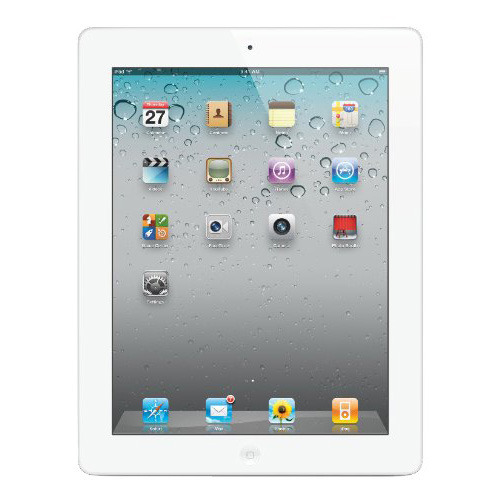April 3 marks the eighth anniversary of the iPad's launch and first shipments — and that day brought a product that has revolutionized the definition of a tablet and seen great success. But, the iPad has struggled with its identity in recent times in view of bigger and more powerful smartphones.
In the beginning
Apple was experimenting with tablets long before the iPad came out. Its Newton MessagePad PDAs — dating back to 1993 — were arguably tablet-like, albeit crude by modern standards with limited apps, black-and-white displays, and total dependence on a stylus. The company also prototyped a more powerful PowerBook-based tablet called the PenLite, but decided not to ship it.
Work on the iPad itself actually traces back to 2004, when designer Jonathan Ive and others crafted a new tablet prototype. The product was originally supposed to ship before the iPhone, but the company came to decide the latter was more important, premiering it in 2007 using similar technologies.
After the iPhone became a hit, rumors swirled around tablet plans, with conflicting reports what a product would be called and what it might do. Finally, Apple CEO Steve Jobs announced the iPad on Jan. 27, 2010 at the Yerba Buena Center in San Francisco — immediately setting off waves of both anticipation and skepticism.
The first generation
Preorders began on March 12, 2010 ahead of an Apr. 3 U.S. release date at Apple's online and outlet stores. Initially, only Wi-Fi models were available — 3G-capable models had to wait until Apr. 30, and then could only be used with AT&T in either unlimited or 250-megabyte plans. It wouldn't be until May 28 that any iPad was available outside the U.S.
Thanks to the company's takeover of PA Semi, the iPad was the first product to use an Apple-designed processor, the A4. It also featured a 9.7-inch, 1024-by-768-pixel display, and options for 16, 32, or 64 gigabytes of storage.
The tablet's signature achievement was bringing the iPhone's multi-touch interface to a much larger display, allowing it behave more like a laptop. Though it still lacked an open filesystem or much customization, Apple developed a custom version of the iPhone OS for it, for instance letting people use apps and the homescreen in any orientation — unlike the iPhone, which at the time was strictly vertical.
The product also heralded the arrival of iBooks and the iBookstore, with the anticipation that people would want to read books, magazines, and newspapers in the new format. Apple's collusion with publishers to fight Amazon's dominance of e-books would eventually result in severe legal reprimands.
Sales of the iPad were strong out of the gate. More than 300,000 were sold at launch, and by May 3, 1 million. Towards the end of the year, iPads were outselling Macs on a quarterly basis.
iPad 2
Released March 11, 2011, the iPad 2 included a faster A5 processor, but was perhaps most significant for refining Apple's design and concepts. The product was both lighter and thinner, and was the first model to support Smart Covers, adding magnets which not only kept cases attached but would wake an iPad when opened. A gyroscope as well as front- and rear-facing cameras opened up other new functions, including FaceTime.
In many ways, the iPad 2 became Apple's tablet workhorse. The device stayed on sale for years, with a minor revision after the third-generation iPad was released, shrinking the size of the A5 and improving power consumption. It was able to run six different versions of iOS, from 4 through 9.
It was around this time that Apple began pushing the iPad as an educational product — an initiative that would only accelerate in coming years.
"The new iPad" & iPad mini
2012's third-generation iPad built on this foundation with the dual-core A5X processor, quad-core graphics, and the first-ever Retina display on an iPad, pushing resolution to 2,048 by 1,536. It also supported LTE, though not across the globe.
The third generation device was under-powered for the retina screen. So, A fourth-generation iPad — released in October the same year — took the same overall design and upgraded it with an A6X chip, FaceTime HD, and wider LTE compatibility. It was also the first iPad to adopt a Lightning port, abandoning 30-pin connectors.
Looking to fend off devices like the Amazon Kindle Fire and Google Nexus 7, Apple simultaneously announced the iPad mini, a tablet with specs similar to the iPad 2 but in a smaller and lighter 7.9-inch format.
iPad Air & Mini 2
The Air, shipped in November 2013, was another serious stab at redesigning the iPad. The device was even thinner at 7.5 millimeters, and 22 percent lighter than the iPad 2. Bezels were shrunk, cameras were upgraded, and it switched to an A7 processor matched by an M7 motion co-processor.
Shipping around the same time was the iPad mini 2, similar in most respects to the Air — above all, making the jump to a Retina display some thought should've been on the first Mini.
iPad Air 2 & Mini 3
By 2014 the iPad was becoming less of a marquee product, likely overshadowed by the launch of the iPhone 6 and 6 Plus, Apple's first iPhones over 4 inches. This was exemplified by the Air 2 — which mainly gained Touch ID, a triple-core A8X processor, and 2 gigabytes of RAM — but particularly the Mini 3, which was essentially a Mini 2 with Touch ID.
iPad Pro, Apple Pencil & Mini 4
In a bid to reinvigorate sales and cast the iPad as a serious tool, September 2015 saw the announcement of the first iPad Pro, a 12.9-inch, $799 tablet with an A9X processor, 4 gigabytes of DDR4 RAM, the first Smart Connector port and optional Smart Keyboard, plus support for the Apple Pencil — a low-latency stylus with pressure sensitity and angle detection. While the Pencil was ultimately well-received, it has sometimes been criticized for its $99 pricetag and the placement of its Lightning connector, which causes it to jut out like a spike when plugged into an iPad.
A 9.7-inch Pro would follow in March 2016. This downgraded to 2 gigabytes of RAM and a slightly slower version of the A9X, but introduced Retina Flash for front-facing photos, and a True Tone flash on the rear. The True Tone brand was also applied to its display, Apple's first able to match color temperature to ambient lighting.
The Mini 4 — still Apple's latest in the Mini line — was revealed at the same time as the 12.9-inch Pro. The tablet was given an A8 processor and 2 gigabytes of RAM, once again leaving it in the wake of its bigger siblings.
All three tablets did however support new multitasking features through iOS 9: Slide Over, Split View, and Picture in Picture.
2017 and beyond
Apple tweaked the iPad Pro line last June, ensuring that both had 2.34-gigahertz hexa-core A10X chips, 4 gigabytes of RAM, and True Tone displays, while upgrading the smaller size to 10.5 inches with smaller bezels. "ProMotion" enhanced the refresh rate of their screens to 120 Hertz.
To replace the aging iPad Air 2, the company released a $329, 9.7-inch "budget" iPad in March 2017, armed with an A9 processor and 2 gigabytes of RAM. It lacked some Pro features like rear flash, a True Tone display, and Apple Pencil compatibility.
The company updated the budget iPad at the Chicago "Field Trip" press event, giving it an A10 chip and Pencil support while still holding back on things like a True Tone display and rear flash. For schools the tablet was priced at $299.
iOS 11, released in September 2017, improved multitasking further with additions like a Mac-like dock, a dedicated Files app, and drag-and-drop for compatible apps.
Where do we go from here?
Current rumors point to new Pros appearing in June, equipped with Face ID like the iPhone X. They're expected to ditch physical home buttons at the same time, shrinking size and weight even further, though their displays probably won't go completely edge-to-edge.
The company is likely to hold off on switching from LCD to OLED, since the latter is already costly enough on iPhones. Inside the tablets will probably move to eight-core "A11X" processors.
The future of 2019 and beyond is uncertain. Apple will probably migrate to OLED or MicroLED, but only once it becomes profitable. At some point the company may be forced to make iPads even more Mac-like, if not by opening up their filesystem, then by supporting more peripherals and making iOS as flexible as possible.
The iPad conundrum
It's not clear what Apple had in mind for a consumer cycle for the iPad. It appears that they were expecting a two-year cycle like the iPhone, when in actuality they got something close to four years, like the Mac. The iPad is built to last, so Apple may be a victim of its own success in that regard.
This has led to some Wall Street-related drama, and prognostications that the iPad is a dying product. But, the iPad sells a bit more in volume now than the Mac does, at a lower average price in a so-called declining sales environment.
The iPad alone is about half of Dell's total sales volume of all of its hardware. It is not a dead-end product, and it and the iPhone sent the PC market on a downward spiral.
The iPad is going nowhere.
 Roger Fingas
Roger Fingas




















-m.jpg)






 Malcolm Owen
Malcolm Owen
 William Gallagher
William Gallagher
 Andrew Orr
Andrew Orr



 Wesley Hilliard
Wesley Hilliard





-m.jpg)




53 Comments
"The iPad is going nowhere."
They need a x model, no bezel and OLED, what’s the point in buying these when most people only use them for movies, reading, maybe games. They become obsolete to soon with the slow processors for the high price!
Remember when the original was coming out and everybody thought that it would cost $1,000 and run OSX?!
Not helping themselves in not updating the iPad Mini each year! It would not cost them very much to just add memory and new SoC to the same design. They seem to not real care that their are buyers who what to update their Minis.